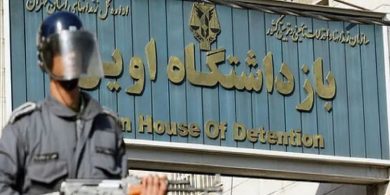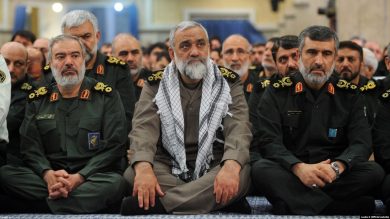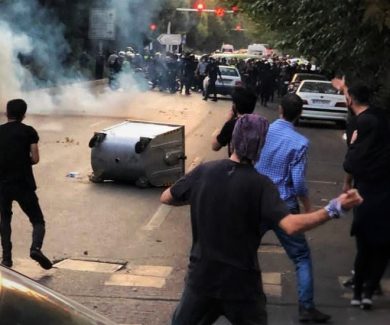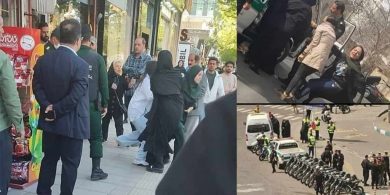For decades, Iranian women have been at the forefront of the struggle for freedom, equality, and human rights. Despite living under one of the most oppressive regimes, where the Islamic Revolutionary Guard Corps (IRGC) enforces strict laws, they continue to resist, organize, and protest. The “Women, Life, Freedom” movement is the latest chapter in a long history of defiance, proving that Iranian women’s fight for justice is unstoppable.
This article explores:
• The role of women in Iran’s protest movements.
• How the IRGC suppresses dissent and how women resist.
• Key figures leading the fight for change.
• Why global solidarity is essential in amplifying Iranian women’s voices.
1. Iranian Women: The Heart of Protest Movements
A. A Legacy of Resistance
Iranian women have a long history of standing against oppression:
• In the 1905 Constitutional Revolution, women fought for political participation.
• During the 1979 Revolution, many women joined protests, hoping for greater rights, only to see them stripped away by the new regime.
• The 2009 Green Movement saw women marching for democracy and election transparency.
• The 2017-2019 protests brought economic and political issues to the streets, where women played key roles.
Each of these movements paved the way for today’s women-led resistance.
B. The Spark: Mahsa Amini’s Death and the “Women, Life, Freedom” Movement
The 2022 uprising began when Mahsa Amini, a 22-year-old Kurdish woman, was arrested by the morality police for allegedly wearing her hijab “incorrectly.” She was beaten in custody and later died from her injuries. Her death ignited nationwide protests, with women removing their hijabs and chanting:
“Women, Life, Freedom!”
What made this movement different?
• Women were not just participants—they were leaders.
• The protests spread beyond major cities to smaller towns and ethnic regions.
• It became the longest-running anti-regime movement in Iran’s modern history.
Despite severe repression, the movement inspired global support and proved that Iranian women would not be silenced.
2. The IRGC’s Brutal Crackdown on Women Protesters
A. Systematic Repression
The IRGC, tasked with protecting the regime, has responded with brutality:
• Live ammunition and beatings against peaceful protesters.
• Arrests, torture, and executions of women activists.
• Internet blackouts to prevent the world from seeing the truth.
Despite these tactics, women continue to protest, organize, and speak out.
B. Prisons as Tools of Control
Women arrested by the IRGC are often sent to notorious prisons such as:
• Evin Prison, known for torture and forced confessions.
• Qarchak Prison, where women face sexual violence and solitary confinement.
Yet, even in prison, women remain unbreakable. Many, like Narges Mohammadi, continue to write, organize, and inspire resistance from behind bars.
3. Stories of Courage: Women Leading the Fight
A. Narges Mohammadi: The Voice of Iran’s Women
• A human rights activist imprisoned multiple times for defending women’s rights.
• Winner of the 2023 Nobel Peace Prize for her bravery in exposing IRGC abuses.
• Despite imprisonment, she continues to speak out against gender apartheid in Iran.
B. Masih Alinejad: The Face of Digital Resistance
• An exiled journalist and activist who founded the #MyStealthyFreedom campaign.
• Exposes IRGC brutality on social media, connecting Iranian women with the world.
• Survived an assassination attempt orchestrated by the Iranian regime.
Her digital activism has kept global attention on Iranian women’s fight.
C. Sepideh Gholian: Defying Fear
• A journalist arrested for covering workers’ protests.
• Publicly chanted anti-regime slogans in front of Evin Prison after her release.
• Her courage has inspired young women to continue resisting.
4. How Iranian Women Are Redefining Protest
A. Everyday Acts of Resistance
While mass protests are powerful, Iranian women also resist in everyday life:
• Removing hijabs in public despite the risk of arrest.
• Dancing and singing—acts that are banned for women under Iranian law.
• Boycotting pro-regime businesses to weaken economic support for the government.
These small actions send a powerful message: The regime’s control is weakening.
B. The Role of Social Media
Despite IRGC censorship, Iranian women use digital platforms to:
• Share videos of protests, exposing human rights violations.
• Organize flash protests that are harder for security forces to control.
• Connect with global activists, ensuring that their voices are heard.
The battle for Iran’s future is being fought both on the streets and online.
5. The Impact of Women’s Protests on Iranian Society
A. Changing Perceptions
• More men are now joining women-led protests, recognizing that gender equality is key to Iran’s liberation.
• Even religious conservatives are questioning the legitimacy of forced hijab laws.
B. The Regime’s Fear of Women
Why does the Iranian government fear women protesters so much?
• Because women-led movements challenge the ideological foundation of the regime.
• Because gender equality threatens the regime’s power structure.
• Because when women rise, the entire nation follows.
6. The Role of Global Solidarity
A. Why the World Must Stand with Iranian Women
• Iranian women are fighting for universal human rights—not just their own.
• Their struggle is part of a global fight against authoritarianism and gender oppression.
• If Iran’s women succeed, the entire Middle East changes.
B. How to Support Iranian Women
Governments should:
✔ Sanction the IRGC for its role in gender-based violence.
✔ Pressure Iran to release all political prisoners.
✔ Provide asylum for women activists at risk.
Individuals can:
✔ Share news and stories about Iranian women’s protests.
✔ Support campaigns like #WomenLifeFreedom.
✔ Donate to human rights organizations supporting Iranian activists.
7. Conclusion: The Unstoppable Force of Iranian Women
Iranian women have proven that they are unbreakable. Their protests and resistance are shaping Iran’s future, inspiring people across the world.
Despite IRGC brutality, despite prison and torture, they continue to fight.
From Mahsa Amini’s tragic death to the ongoing defiance of activists, Iranian women’s battle for freedom is far from over—but victory is inevitable.
Join Our Newsletter!
Stay informed with the latest updates, news, and ways to take action in the fight for justice and global security. Sign up now to get updates delivered straight to your inbox!





